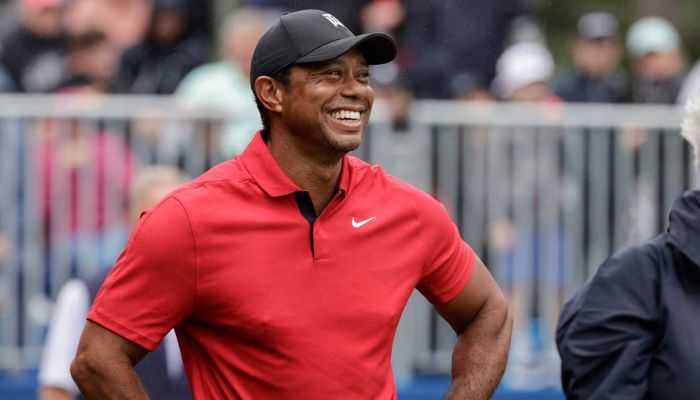When we celebrate sporting legends, the spotlight often shines only on the athletes — the medals, records, trophies, and the tears on podiums. What’s less visible, but equally powerful, is the steady hand that guided them long before the world noticed. For many of the greatest athletes of our time, that hand belonged to their fathers.
A father’s love in sports is not always soft. Sometimes it comes through tough discipline, relentless training schedules, or personal sacrifices. At other times, it means saying no today so a child can say yes to greatness tomorrow.
Behind Tiger Woods, Lewis Hamilton, Serena and Venus Williams, Floyd Mayweather Jr., and Stephen Curry are fathers who spotted potential before the world did. They believed, pushed, and sacrificed — and in doing so, shaped champions.
Here are five sports stars whose fathers played a defining role in their rise to greatness.
Earl Woods and Tiger Woods
Before Tiger Woods could even walk properly, his father, Earl Woods, had already put a golf club in his hands. Earl, a former Green Beret who served in Vietnam, treated his son’s training like a mission. He claimed Tiger was swinging a club at nine months old. By age two, Tiger was dazzling television audiences, and at three, he appeared on The Mike Douglas Show, sinking putts alongside Bob Hope.
Earl’s methods were unorthodox but effective. He toughened Tiger with military-style drills — rattling change during his backswing, tossing distractions, or locking him with a stare. When Tiger asked him to “make me tough,” Earl warned, “You’re not going to like it.” But Tiger trusted him, and together they built the mental edge that became as iconic as his swing.
The results: 15 major championships, 82 PGA Tour wins, the first Black man to win the Masters, and a career that redefined golf. At just 21, Tiger signed a $40 million Nike deal and won the Masters by a record 12 shots. The embrace he shared with his father that day — Earl fresh from heart surgery, remains one of golf’s defining images.
Tiger later described Earl as his “best friend and greatest role model.” More than a coach, Earl was the architect of a legend.
Anthony Hamilton and Lewis Hamilton
For Lewis Hamilton, the seven-time world champion, the journey to the top was powered by his father, Anthony.
Anthony juggled up to four jobs, vending machine repairs, IT shifts, and even mortgaging the family home, to fund Lewis’s karting career. In a sport dominated by wealthy families and elite pit crews, the Hamiltons often stood out as the only Black family at the track.
But Anthony gave Lewis something money couldn’t buy: resilience. He built his son’s karts in their garage, hand-painted his helmet so he could spot him in the pack, and drilled into him the mantra: “Do your talking on the track.”
The sacrifices were immense. “At one stage, he had four jobs just to keep us go-karting,” Lewis recalled. That belief paid off: Lewis now holds more wins and pole positions than anyone in history, tied with Michael Schumacher on world titles.
Their relationship had rocky moments; Lewis even split with his father as manager to gain independence, but the bond endured. “He was there from day one,” Lewis says. “He knows what it took.” Anthony never drove the cars, but his vision powered every lap.
Richard Williams and the Williams Sisters
Few stories of sporting parenthood are as legendary as Richard Williams and his daughters, Venus and Serena. Long before they were born, Richard had written a 78-page plan detailing how they would become tennis champions. People laughed at him, but he went to work.
In Compton, California, the courts were often dangerous. Richard fended off gangs so his girls could practice. Money was tight, but his belief was unshakable. He called Venus and Serena “the number one girls in the world” before they could even grip a racket.
When a reporter once grilled a young Venus, Richard cut him off: “You’re dealing with a little Black kid. She said she’s confident. Leave that alone!” That fierce protection matched his vision.
The payoff was historic: Serena with 23 Grand Slam singles titles, Venus with seven, 14 doubles titles together, and three Olympic golds. Beyond the trophies, they transformed tennis, showing the world that two Black girls from Compton could dominate a sport that had often excluded them.
“Who would have thought he could raise two Black girls to play a sport that African Americans haven’t typically done well in?” Serena reflected. “Every time I stand out there, I think I wouldn’t be here if somebody didn’t have that vision for me.”
Floyd Mayweather Sr. and Floyd Mayweather Jr.
In Mayweather’s household, boxing was a family trade. Floyd Mayweather Sr., a fighter himself, started training his son almost as soon as he could walk. By five, Floyd Jr. was already jogging miles alongside his father.
Mayweather Sr.’s own career fell short, and a prison sentence kept him away for years. But when he returned, he poured everything into ensuring his son’s success. “My father hustled to give me a better life, and I love him for that,” Floyd Jr. said. “I learned from my dad’s mistakes.”
The result was a career without blemish: 50–0, 15 world titles across five weight classes, and record-breaking earnings that made Floyd Jr. the richest fighter in history.
Dell Curry and Stephen Curry: Quiet Fundamentals
Not all sporting fathers bark instructions or enforce military-style regimens. Some, like Dell Curry, let their example do the talking.
Dell spent 16 years in the NBA as a steady shooter. When his sons, Stephen and Seth, showed interest, he taught them the basics, the shot, the work ethic, the professionalism, and then stepped back.
Stephen, undersised and often overlooked, relied on that foundation. “I taught my boys the fundamentals of the game and fundamentals of the shot,” Dell said. He kept it simple.
Stephen Curry became a two-time MVP, four-time champion, and the player who changed basketball with his three-point shooting. Millions of kids now copy his shot, but the roots trace back to long evenings in the gym with his father.








